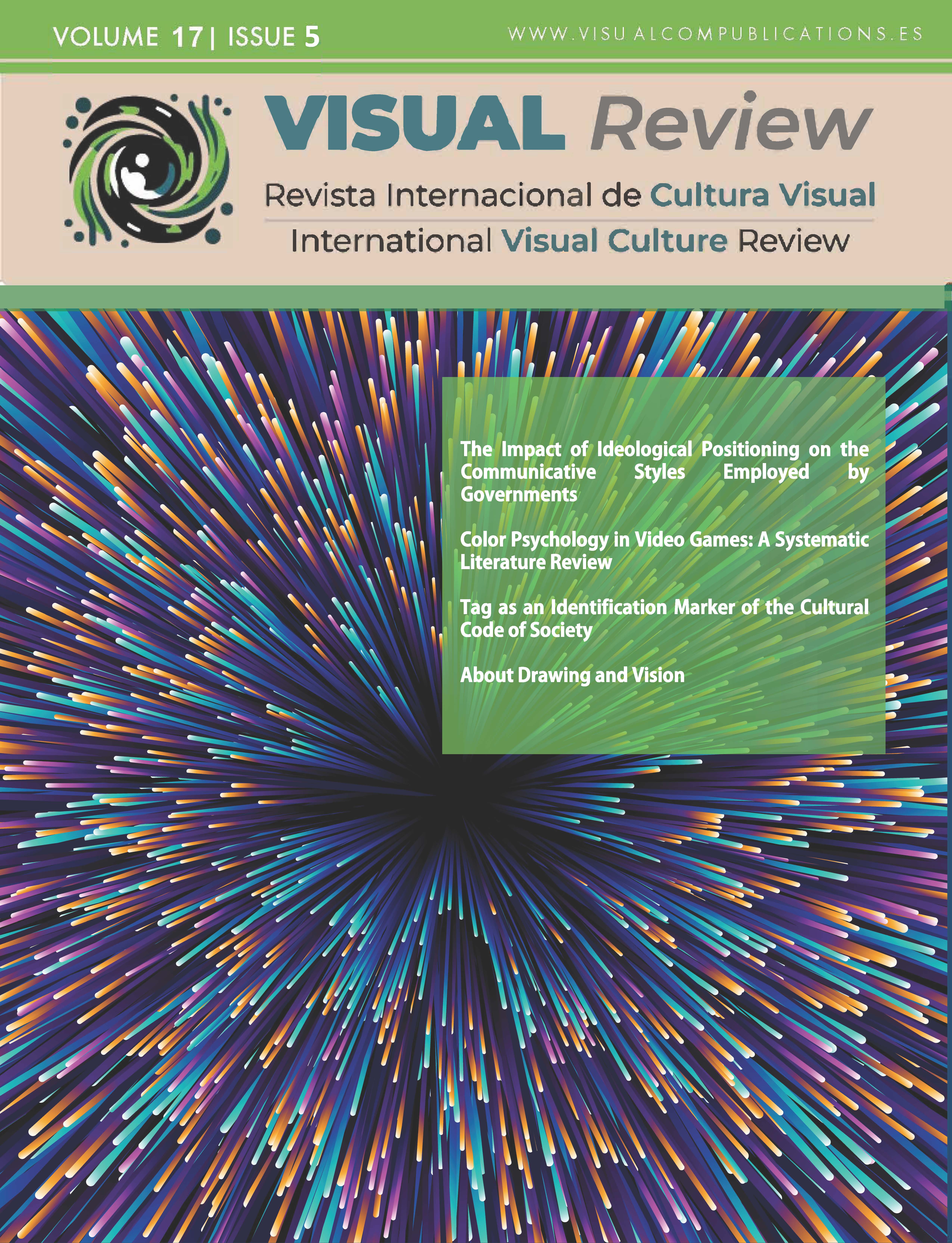Critical Media Literacy With and Within Generative AI
Desing Based Research on #PinchaLaBurbuja platform
DOI:
https://doi.org/10.62161/revvisual.v17.5948Keywords:
Critical Media Literacy, Generative artificial intelligence, Inoculation theory, Design-Based Research (DBR), Cognitive impulsivity, System 2 thinkingAbstract
This article presents the design phase of the platform #PinchaLaBurbuja, an environment aimed at fostering critical media literacy through the use of generative artificial intelligence, with the goal of promoting critical agency in postdigital contexts. The proposal introduces three key innovations: GPT-based cyborgs developed using agent prompting techniques and RAG architecture, grounded in the principles of affective polarization, post-truth, and virality; a critical reformulation of inoculation theory; and the discursive evaluation of AI as an educational actor. Employing a Design-Based Research (DBR) approach, the study analyzes emerging patterns, the application of critical inoculation, and the pedagogical self-awareness of the cyborgs. The results reveal epistemic contrast patterns, bias reduction, and argumentative refutation, alongside areas for improvement in gamification and traceability.
Downloads
Global Statistics ℹ️
|
143
Views
|
72
Downloads
|
|
215
Total
|
|
References
Almazán-López, O., & Osuna-Acedo, S. (2023). Identidad transmediática en la escuela: Alfabetización mediática e informacional crítica en la era postdigital. En Alfabetización mediática crítica: Desafíos para el siglo XXI: Critical media literacy: Challenges for the 21st century. Literacia mediática crítica: Desafios para o século XXI.
Antunes, A., Campos, J., Guimarães, M., Dias, J., & Santos, P. A. (2023). Prompting for socially intelligent agents with ChatGPT. En IVA '23: Proceedings of the 23rd ACM International Conference on Intelligent Virtual Agents (Artículo n.º 20, pp. 1–9). ACM. https://doi.org/10.1145/3570945.3607303
Arendt, Hannah (1951). The origins of Totalitarianism. New York: Schocken [Elemente und Ursprünge totaler Herrschaft] (revised ed.). Houghton Mifflin Harcourt. ISBN: 978 0 547543154
Bruns, A. (2021). Echo chambers? Filter bubbles? The misleading metaphors that obscure the real problem. In Hate speech and polarization in participatory society (pp. 33-48). Routledge.
Buckingham, D. (2019). Teaching media in a ‘post-truth’ age: Fake news, media bias and the challenge for media/digital literacy education. Culture and Education, 31(2), 213–231.
Center for Countering Digital Hate. (2024). STAR Framework: Reducing the algorithmic amplification of hate and misinformation online. https://counterhate.com/star
Comisión Europea. (2024). Reglamento (UE) 2024/1689 por el que se establecen normas armonizadas sobre inteligencia artificial. https://eur-lex.europa.eu/legal-content/ES/TXT/?uri=CELEX%3A32024R1689
Compton, J., & Pfau, M. (2009). Spreading inoculation: Inoculation, resistance to influence, and word-of-mouth communication. Communication Theory, 19(1), 9–28. https://doi.org/10.1111/j.1468-2885.2008.01330.x
Crespo Martínez, I., Melero-López, I., Mora Rodríguez, A., & Rojo Martínez, J. M. (2024). Política, uso de medios y polarización afectiva en España.
Churches, A. (2009). Taxonomía de Bloom para la era digital
Damborrenea, R. G. (2000). Diccionario de falacias.
Damborrenea, R. G. (2011). Uso de razón: El arte de razonar, persuadir, refutar. Ediciones Uso de Razón.
Emsley, R. (2023). ChatGPT: These are not hallucinations – they’re fabrications and falsifications. Schizophrenia, 9, Article 52. https://doi.org/10.1038/s41537-023-00379-4
XXXXXX., y Leví Orta, G. (2013). El humor como estrategia de motivación.
Fernández, P. C. (2023). Efectos de la sobrecarga de información en el comportamiento del consumidor de noticias: El doomscrooling. VISUAL REVIEW. International Visual Culture Review/Revista Internacional De Cultura Visual, 14(1), 1-11.
Freire, P. (1975). Pedagogía del oprimido (14.ª ed.). Siglo XXI Editores. https://isbn.org/9788432301841
Hao, C., Uusitalo, S., Figueroa, C., Smit, Q. T., Strange, M., Chang, W. T., ... & de Boer, M. H. (2025). A human-centered perspective on research challenges for hybrid human artificial intelligence in lifestyle and behavior change support. Frontiers in Digital Health, 7, 1544185.
Garg, R., Han, J., Cheng, Y., Fang, Z., & Swiecki, Z. (2024). Automated discourse analysis via generative artificial intelligence. Proceedings of the 14th Learning Analytics and Knowledge Conference (LAK ’24), 814–820. https://doi.org/10.1145/3636555.3636879
Gil-Quintana, J., Osuna-Acedo, S., Limaymanta, C. H., & Romero-Riaño, E. (2023). Análisis bibliométrico de artículos sobre innovación educativa en educación a distancia: Un reto para la pedagogía crítica y la educación mediática. American Journal of Distance Education, 37(4), 308–326. https://doi.org/10.1080/08923647.2023.2241715
Giovanola, B., & Granata, P. (2024). Ethics for human-centered education in the age of AI. En F. Spigarelli, L. Kempton, & L. Compagnucci (Eds.), Entrepreneurship and digital humanities (pp. 96–109). Edward Elgar Publishing.
Giroux, H. A. (1995). Teoría y resistencia en educación. Siglo XXI.
Granata, P. (2024). A chatbot for a thought: The flower of evil has bloomed (60 years later). H-ermes. Journal of Communication, 26, 23–36. https://doi.org/10.1285/i22840753n26p23
Jeon, Y., Kim, B., Xiong, A., Lee, D., & Han, K. (2021). Chamberbreaker: Mitigating the echo chamber effect and supporting information hygiene through a gamified inoculation system. Proceedings of the ACM on Human-Computer Interaction, 5(CSCW2), 1-26.
Kadushin, C. (2011). Understanding social networks: Theories, concepts, and findings. Oxford University Press.
Kahneman, D. (2011). Pensar rápido, pensar despacio (J. Chamorro Mielke, Trad.). Debate.
Lelkes, Y., Sood, G., & Iyengar, S. (2017). The hostile audience: The effect of access to broadband Internet on partisan affect. American Journal of Political Science, 61(1), 5−20. https://doi.org/10.1111/ajps.12237
Leyens, J. P., Demoulin, S., Vaes, J., Gaunt, R., & Paladino, M. P. (2007). Infra‐humanization: The wall of group differences. Social Issues and Policy Review, 1(1), 139-172.
McGuire, W. J. (1964). Inducing resistance to persuasion: Some contemporary approaches. Advances in Experimental Social Psychology, 1, 191-229.
McIntyre, L. (2018). Post-truth. MIT Press.
Mollick, E. R., & Mollick, L. (2022). New modes of learning enabled by AI chatbots: Three methods and assignments. Available at SSRN 4300783.
Mollick, E. R., & Mollick, L. (2023). Using AI to implement effective teaching strategies in classrooms: Five strategies, including prompts. The Wharton School Research Paper.
Mollick, E., & Mollick, L. (2023). Assigning AI: Seven approaches for students, with prompts. arXiv preprint arXiv:2306.10052.
Mollick, E., & Mollick, L. (2024). Instructors as innovators: A future-focused approach to new AI learning opportunities, with prompts. arXiv preprint arXiv:2407.05181.
Molenaar, I. (2022). Towards hybrid human‐AI learning technologies. European Journal of Education, 57(4), 556–571. https://doi.org/10.1111/ejed.12525
Observatorio Español del Racismo y la Xenofobia (OBERAXE). (2022). El discurso de odio en redes sociales: análisis, detección y respuesta institucional. Ministerio de Inclusión, Seguridad Social y Migraciones. https://www.inclusion.gob.es/oberaxe/es/publicaciones/documentos/el-discurso-del-odio-en-redes-sociales
Osuna-Acedo, S., Frau-Meigs, D., & Marta-Lazo, C. (2018). Educación mediática y formación del profesorado. Educomunicación más allá de la alfabetización digital. Revista interuniversitaria de formación del profesorado, 32(1), 29-42.
xxxxx (2024). Interacciones y" gatekeepers" en la formación de cámaras de eco en X: caso de estudio# garzon. In La comunicación ante el reto de las inteligencias artificiales, innovación, investigación y transferencias (pp. 308-335). Dykinson.
Pariser, E. (2017). El filtro burbuja: Cómo la web decide lo que leemos y lo que pensamos (1.ª ed.). Taurus.
Phoenix, J., & Taylor, M. (2024). Prompt engineering for generative AI: Future-proof inputs for reliable AI outputs. O’Reilly Media.
Roozafzai, Z. S. (2024). Unveiling power and ideologies in the age of algorithms: Exploring the intersection of critical discourse analysis and artificial intelligence. Qeios. https://doi.org/10.32388/60YE02
Rodríguez-Pérez, A., & Betancor, V. (2023). Infrahumanization: a restrospective on 20 years of empirical research. Current Opinion in Behavioral Sciences, 50, 101258.
Racioppe, B. (2025). Postdigitalidad y memética. Reflexiones educativas sobre la generación de imágenes con IA a partir del trending topic “Cuando el genio malinterpreta nuestro deseo”. Communiars. Revista de Imagen, Artes y Educación Crítica y Social, 13, 75-94. https://dx.doi.org/10.12795/Communiars.2025.i13.05
Salas, E. (2018). Influencia de los 11 principios de Joseph Goebbels en la campaña política de Donald Trump. Revista Caribeña de Ciencias Sociales.
Sardi, J., Candra, O., Yuliana, D. F., Yanto, D. T. P., & Eliza, F. (2025). How Generative AI Influences Students' Self-Regulated Learning and Critical Thinking Skills? A Systematic Review. International Journal of Engineering Pedagogy, 15(1).
Scott, E. E., Rivale, S. D., & Nelson, M. A. (2020). Design-based research: A methodology to extend and enrich biology education research. CBE—Life Sciences Education, 19(2), es11. https://doi.org/10.1187/cbe.19-11-0252
Sunstein, C. R. (2001). Republic.com. Princeton University Press.
Sunstein, C. R. (2017). #Republic: Divided democracy in the age of social media. Princeton University Press.
Sperber, D., & Wilson, D. (2004). La teoría de la relevancia. Revista de Investigación Lingüística, 7(1), 237-288.
Tajfel, H., & Turner, J. C. (1979). An integrative theory of intergroup conflict. En W. G. Austin & S. Worchel (Eds.), The social psychology of intergroup relations (pp. 33-47). Brooks/Cole.
Törnberg, P. (2018). Echo chambers and viral misinformation: Modeling fake news as complex contagion. PLoS one, 13(9), e0203958.
Törnberg, P. (2022). How digital media drive affective polarization through partisan sorting. Proceedings of the National Academy of Sciences, 119(42), e2207159119. https://doi.org/10.1073/pnas.2207159119
Törnberg, P., Andersson, C., Lindgren, K., & Banisch, S. (2021). Modeling the emergence of affective polarization in the social media society. PLOS ONE, 16(10), e0258259. https://doi.org/10.1371/journal.pone.0258259
Törnberg, P., & Törnberg, A. (2024). Inside a White Power echo chamber: Why fringe digital spaces are polarizing politics. New Media & Society, 26(8), 4511-4533.
Tondello, G. F., Wehbe, R. R., Diamond, L., Busch, M., Marczewski, A., & Nacke, L. E. (2016). The Gamification User Types Hexad Scale. En CHI PLAY '16: Proceedings of the 2016 Annual Symposium on Computer-Human Interaction in Play (pp. 229–243). Association for Computing Machinery. https://doi.org/10.1145/2967934.2968082
UNESCO. (2021). El discurso del odio en redes sociales: Manual para educadores. https://unesdoc.unesco.org/ark:/48223/pf0000379829
Van Dijck, J. (2016). La cultura de la conectividad: Una historia crítica de las redes sociales (H. Salas, Trad.) [Versión Kindle]. Siglo XXI Editores.
van Dijk, T. A. (1993). Principles of critical discourse analysis. Discourse & Society, 4(2), 249–283. https://doi.org/10.1177/0957926593004002006
van Dijk, T. A. (2015). Critical discourse analysis. En D. Tannen, H. E. Hamilton, & D. Schiffrin (Eds.), The Handbook of Discourse Analysis (pp. 466-485). Wiley Blackwell.
van Dijck, J. (2020). Seeing the forest for the trees: Visualizing platformization and its governance. New Media & Society, 23(9), 2801–2819. https://doi.org/10.1177/1461444820940293 (Original work published 2021)
Vargas González, C. A., & Quintero Carvajal, D. P. (2023). Aportes de la mayéutica socrática a la educación dialógica. Sophia, colección de Filosofía de la Educación, 35, 73-96. https://doi.org/10.17163/soph.n35.2023.02
Downloads
Published
How to Cite
Issue
Section
License
Copyright (c) 2025 Authors retain copyright and transfer to the journal the right of first publication and publishing rights

This work is licensed under a Creative Commons Attribution-NoDerivatives 4.0 International License.
Those authors who publish in this journal accept the following terms:
-
Authors retain copyright.
-
Authors transfer to the journal the right of first publication. The journal also owns the publishing rights.
-
All published contents are governed by an Attribution-NoDerivatives 4.0 International License.
Access the informative version and legal text of the license. By virtue of this, third parties are allowed to use what is published as long as they mention the authorship of the work and the first publication in this journal. If you transform the material, you may not distribute the modified work. -
Authors may make other independent and additional contractual arrangements for non-exclusive distribution of the version of the article published in this journal (e.g., inclusion in an institutional repository or publication in a book) as long as they clearly indicate that the work was first published in this journal.
- Authors are allowed and recommended to publish their work on the Internet (for example on institutional and personal websites), following the publication of, and referencing the journal, as this could lead to constructive exchanges and a more extensive and quick circulation of published works (see The Effect of Open Access).













